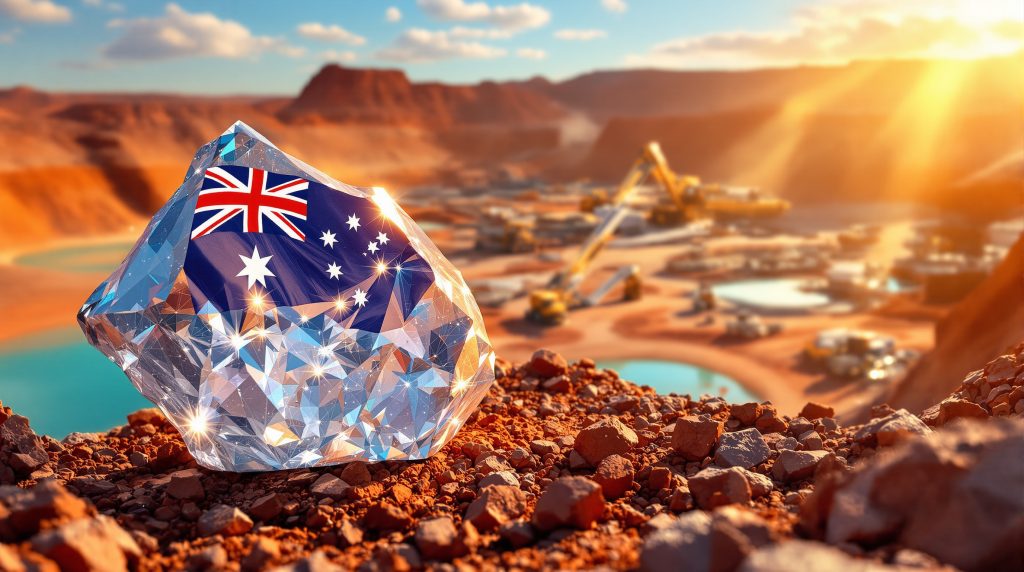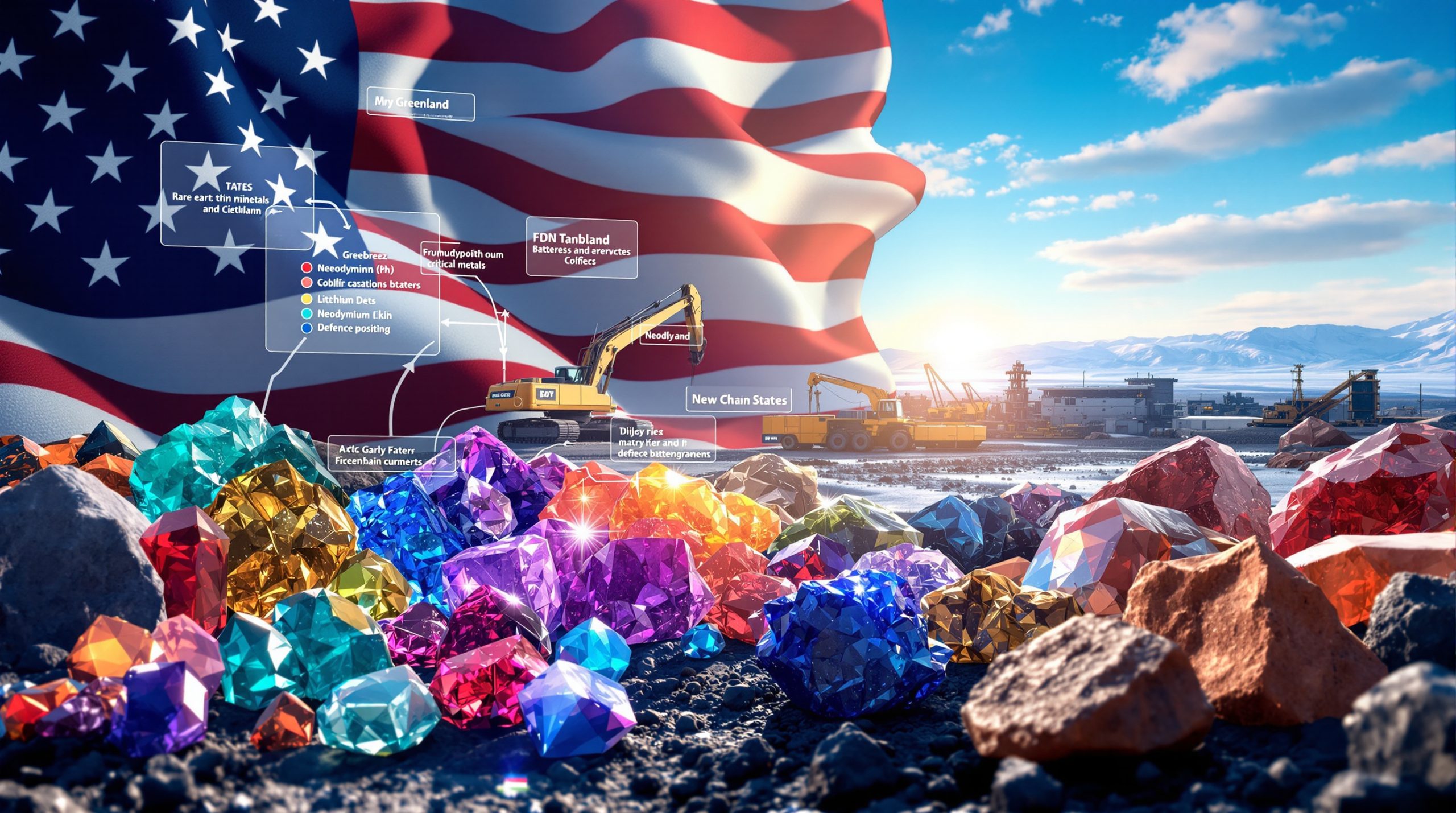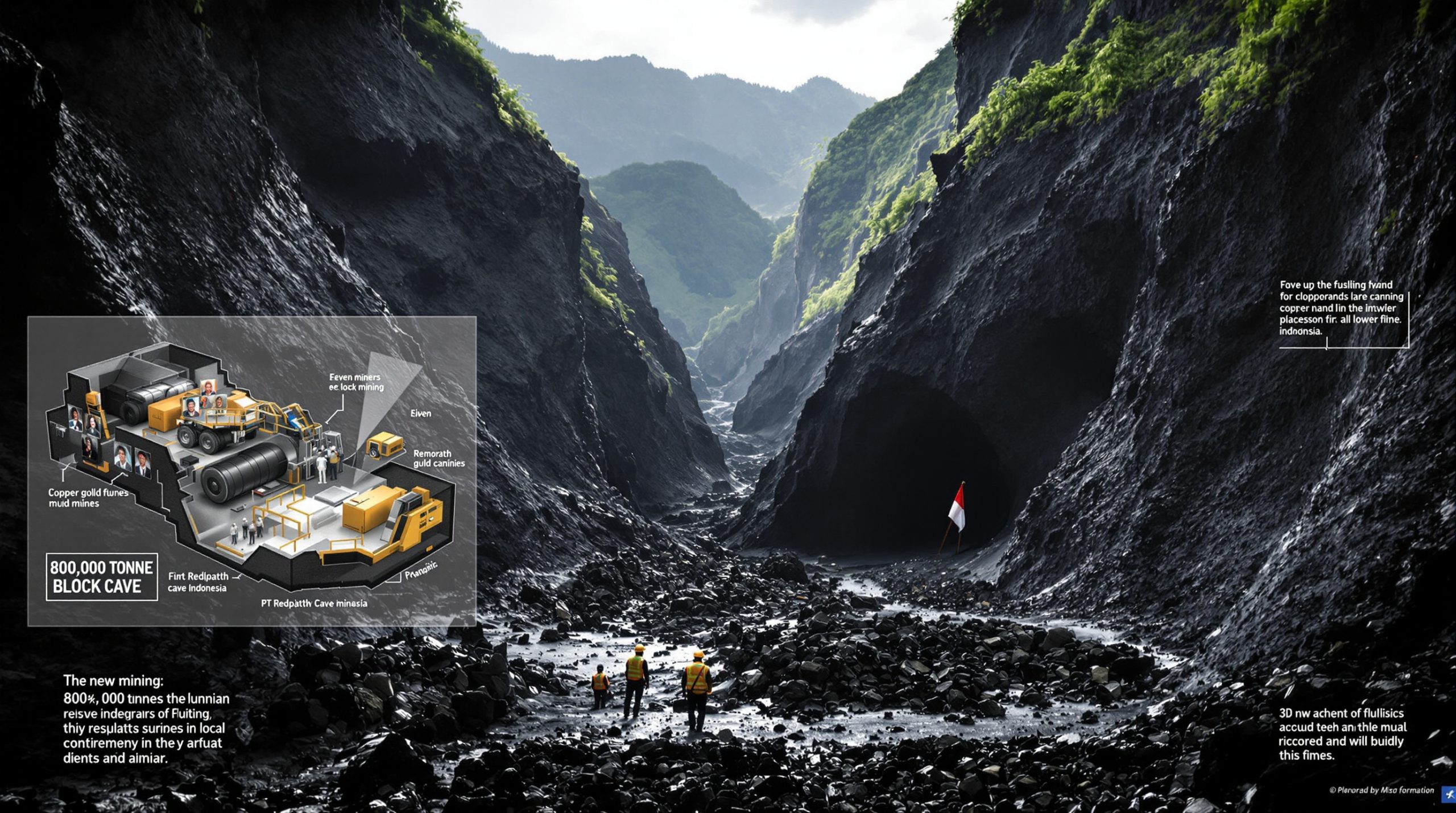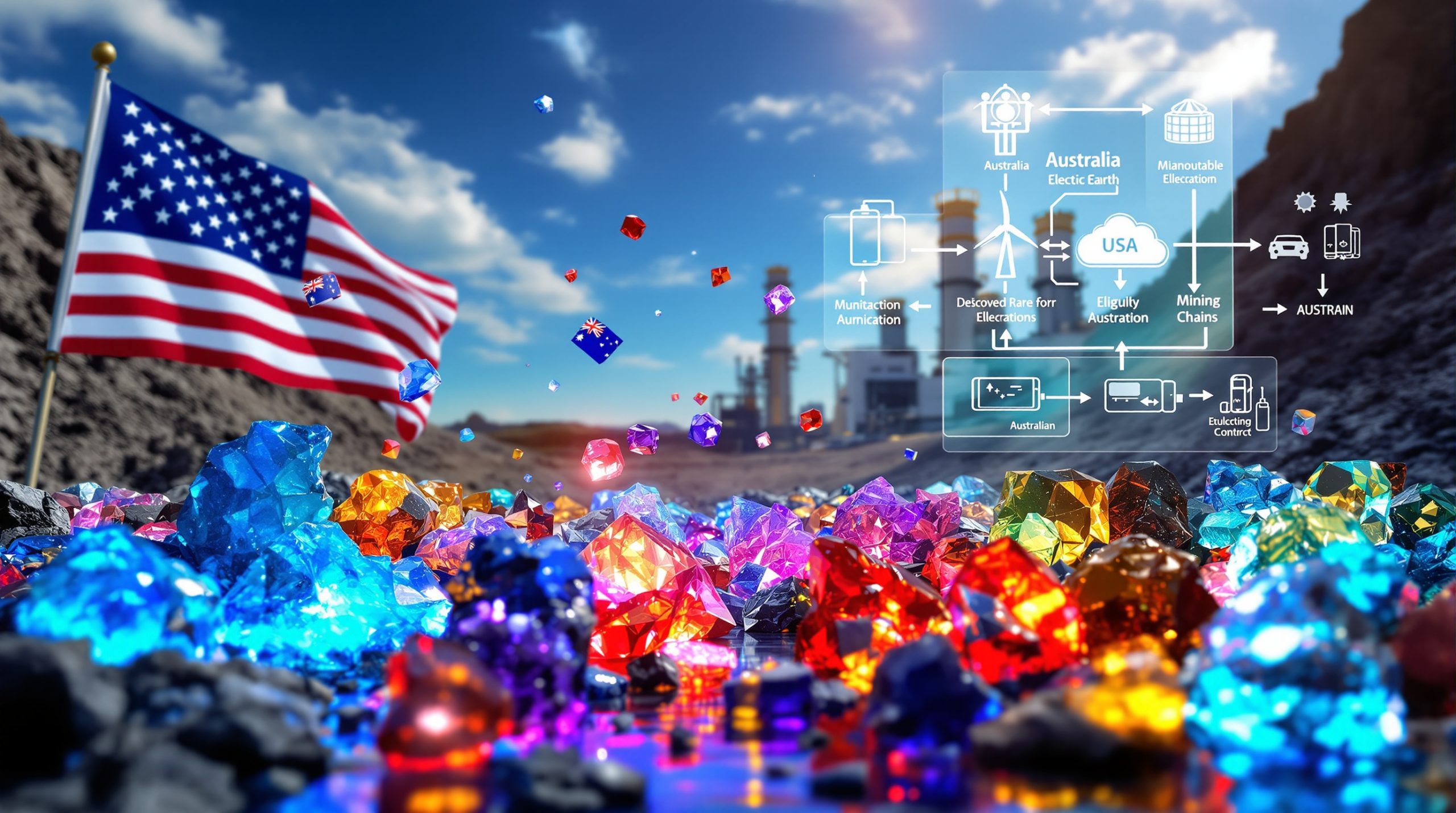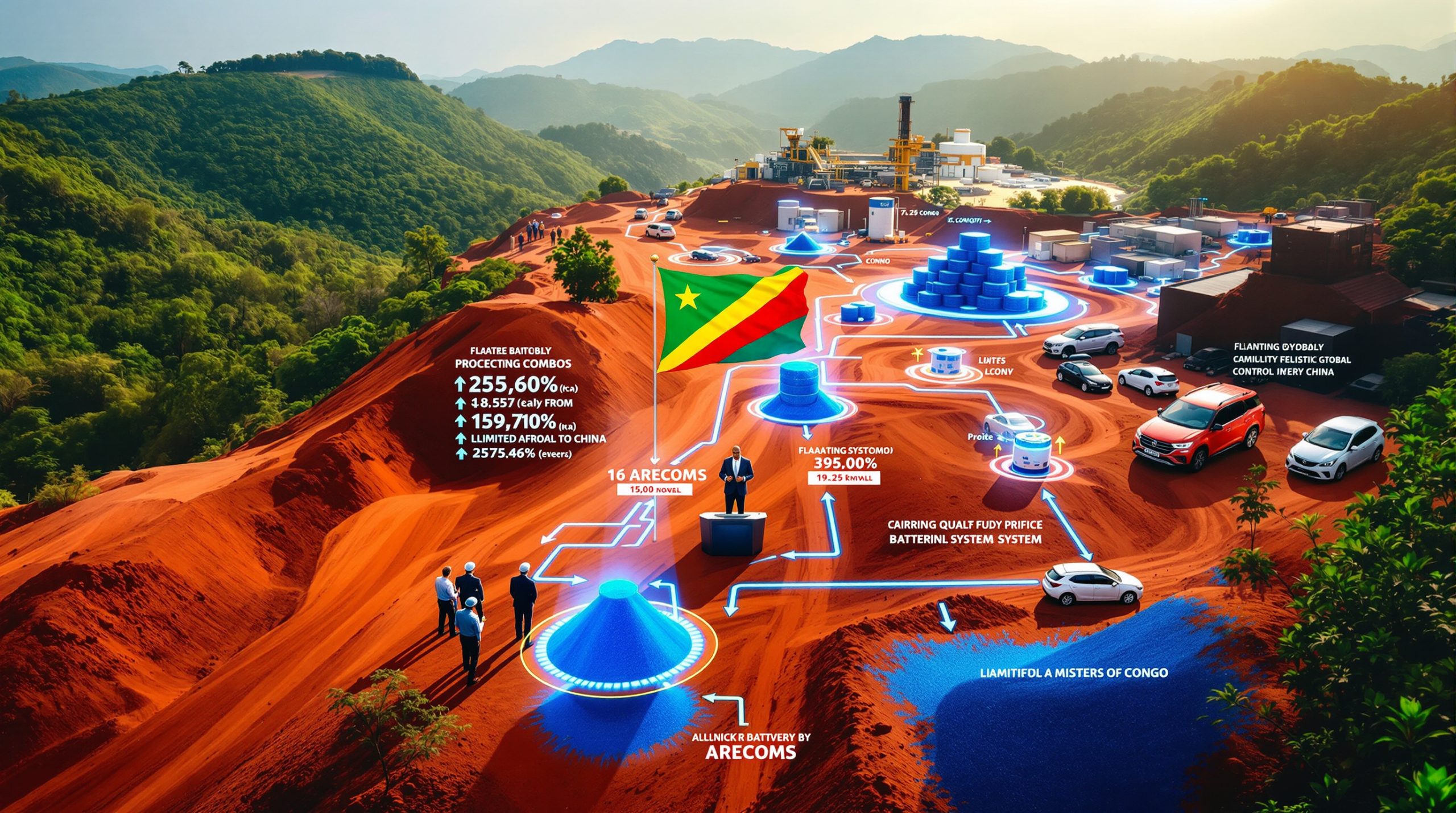The Australian Lithium Mining Boom: Powering the Global Battery Revolution
Australia has emerged as the world's leading lithium producer, with its hard-rock mining operations supplying a significant portion of global lithium demand. This strategic position comes at a crucial time as the world transitions toward renewable energy sources and electric vehicles, creating unprecedented demand for battery materials.
The country's geological advantages, particularly in Western Australia, have enabled it to develop a robust lithium mining in Australia sector that delivers consistent, high-quality material to international markets. This article examines Australia's lithium industry—from extraction methods to major operations—and explores its role in the global battery supply chain.
What Makes Australia a Global Lithium Powerhouse?
Australia's dominance in lithium production stems from its exceptional geological endowment, particularly in Western Australia's ancient pegmatite formations. These deposits contain some of the world's richest concentrations of spodumene, the primary lithium-bearing mineral mined in Australia.
Unlike the brine operations common in South America's "Lithium Triangle," Australian lithium mines extract the mineral from hard rock, offering several advantages including higher-grade concentrations and more reliable production schedules unaffected by seasonal weather variations.
The strategic importance of Australian lithium has grown exponentially with the global push toward electrification. As battery manufacturing capacity expands worldwide, Australia's position as a stable, democratic supplier of this critical mineral has become increasingly valuable to international markets seeking supply chain security and ethical sourcing.
Western Australia's lithium sector has developed a specialized ecosystem of expertise, infrastructure, and services specifically tailored to spodumene extraction insights and processing, further cementing its competitive advantage in global markets.
How Does Australia Extract and Process Lithium?
Hard-Rock Mining vs. Brine Extraction
Australian lithium production relies primarily on hard-rock mining of spodumene found in pegmatite formations. This approach differs fundamentally from the evaporative brine extraction methods used in South America, offering several distinct advantages:
-
Higher lithium concentrations (typically 1-3% lithium oxide content)
-
More consistent production regardless of seasonal weather conditions
-
Faster time-to-market compared to brine operations that may take years to reach full production
-
Lower water consumption requirements in a country where water scarcity is often a concern
The mining process typically involves conventional open-pit methods, with some operations transitioning to underground mining as surface deposits are depleted. After extraction, the ore undergoes crushing, grinding, and concentration processes to produce spodumene concentrate with approximately 6% lithium oxide content.
Processing and Value Addition
Historically, most Australian operations have exported spodumene concentrate to overseas processing facilities, particularly in China. However, the industry is increasingly moving toward domestic value addition through:
-
Construction of spodumene conversion plants producing lithium hydroxide
-
Development of integrated mining-to-battery material operations
-
Strategic partnerships with battery manufacturers and automakers
-
Research into advanced refining techniques to improve recovery rates and product quality
This vertical integration strategy aims to capture more value from Australia's lithium resources while strengthening global supply chains for battery materials. By moving up the value chain, Australian producers can reduce their exposure to commodity price volatility while creating additional employment opportunities domestically.
Where Are Australia's Major Lithium Deposits Located?
The vast majority of Australia's lithium resources are concentrated in Western Australia, particularly within ancient pegmatite formations in the state's southwest and Pilbara regions. These geological structures, formed millions of years ago, contain some of the world's highest-grade lithium deposits.
Key lithium-producing regions include:
| Region | Notable Characteristics | Major Deposits |
|---|---|---|
| Southwest WA | Oldest mining region, highest grades | Greenbushes |
| Pilbara | Emerging production hub, multiple large deposits | Wodgina, Pilgangoora |
| Yilgarn Craton | Developing region with significant potential | Mt Marion, Mt Holland |
| Northern Territory | Newer frontier for lithium exploration | Finniss |
The geological conditions in Western Australia created these world-class deposits through a series of ancient tectonic events that concentrated lithium-bearing minerals in specific formations. The Archean-aged cratons and Proterozoic mobile belts provide the perfect setting for the formation of lithium-rich pegmatites.
While the Southwest region hosts the world-famous Greenbushes mine, the Pilbara region has emerged as a major production center with multiple world-class operations. The Yilgarn Craton continues to yield promising discoveries, while emerging projects in the Northern Territory represent the geographic expansion of Australia's lithium footprint.
What Are Australia's Largest Lithium Mining Operations?
Greenbushes Mine: The Global Benchmark
The Greenbushes mine in Western Australia stands as the world's largest and highest-grade hard-rock lithium operation. Operated by Talison Lithium (a joint venture between Tianqi Lithium and Albemarle Corporation), this historic mine has been producing lithium since the 1980s but has undergone massive expansion in recent years.
Key statistics:
-
Produces approximately 1.95 million tonnes of spodumene concentrate annually
-
Contains ore grades averaging 2.4% lithium oxide (exceptionally high by global standards)
-
Employs over 500 people directly
-
Currently undergoing further expansion with a third processing plant
The mine's exceptional grade and scale make it the benchmark against which other hard-rock lithium operations are measured globally. Its production costs are among the lowest in the industry, providing significant margin protection even during periods of price volatility.
Wodgina Mine: Massive Scale with Room to Grow
The Wodgina lithium mine, operated as a joint venture between Mineral Resources and Albemarle Corporation, represents one of the world's largest hard-rock lithium resources. After a temporary suspension during market downturns, operations have resumed with significant capacity increases planned.
Current developments include:
-
Phased restart of processing trains to reach full production capacity
-
Construction of a downstream lithium hydroxide conversion facility
-
Estimated resource life exceeding 30 years at planned production rates
-
Strategic location with access to Port Hedland shipping facilities
The scale of Wodgina's resource base positions it as a cornerstone of global lithium supply for decades to come. Its modular design allows production to be adjusted in response to market conditions, providing operational flexibility.
Pilgangoora Operation: Rapid Expansion and Integration
Operated by Pilbara Minerals, the Pilgangoora lithium-tantalum project has rapidly grown from an exploration project to a major global producer. The operation continues to expand through a phased development approach.
Recent milestones include:
-
Production capacity increases to over 640,000 tonnes of spodumene concentrate annually
-
Implementation of innovative processing technologies to improve recovery rates
-
Strategic partnerships with battery manufacturers and automotive companies
-
Development of value-added processing capabilities
Pilgangoora's integration into global battery supply chains exemplifies the evolution of Australia's lithium sector toward greater value capture and market influence. The operation also produces tantalum as a valuable by-product, enhancing its economic profile.
How Has the Australian Lithium Industry Evolved?
From Mining Boom to Strategic Industry
Australia's lithium sector has transformed from a speculative mining boom to a strategically critical industry within just a decade. This evolution has seen multiple phases:
-
Exploration Rush (2015-2017): Surge in lithium exploration activities and project acquisitions
-
Capacity Expansion (2017-2019): Rapid development of new mines and processing facilities
-
Market Correction (2019-2021): Consolidation during lithium price downturns
-
Strategic Repositioning (2021-Present): Focus on integration with battery supply chains and domestic processing
This maturation has positioned Australian producers as essential partners in global electrification efforts rather than merely commodity suppliers. The industry has developed more sophisticated business models, including direct partnerships with battery manufacturers and automakers.
Industry Consolidation and International Investment
The Australian lithium landscape has seen significant consolidation, with major international players securing positions through:
-
Joint ventures between Australian miners and global chemical companies
-
Direct acquisitions of Australian lithium assets by international corporations
-
Strategic offtake agreements linking Australian production to battery manufacturers
-
Integration of Australian operations into global supply chains
This international investment has brought capital, technical expertise, and market access while cementing Australia's position in the battery materials ecosystem. Companies from China, the United States, and Europe have all established significant stakes in Australian lithium operations, recognizing their strategic importance.
What Challenges Does Australian Lithium Mining Face?
Market Volatility and Price Fluctuations
The lithium market has experienced significant price volatility, creating challenges for Australian producers:
-
Spot prices for spodumene concentrate have fluctuated between $400 and $7,000 per tonne in recent years
-
Project development timelines often conflict with market cycles
-
Capital investment decisions complicated by uncertain long-term pricing
-
Competition from expanding global production capacity
To address these challenges, Australian producers are increasingly pursuing long-term offtake agreements and vertical integration strategies to reduce exposure to spot market volatility. Many companies have also implemented modular expansion plans that allow production to be scaled based on market conditions.
According to industry reports, lithium prices experienced a 23% increase in September 2025 from multi-year lows, prompted by the closure of a major Chinese operating mine owned by CATL and speculation around further Chinese supply cuts. This demonstrates the ongoing volatility in the sector and how supply disruptions in one region can significantly impact global prices.
Environmental and Social Considerations
As with all mining industry evolution operations, lithium extraction presents environmental challenges that must be managed:
-
Water usage in processing operations
-
Land disturbance from open-pit mining activities
-
Energy consumption and associated emissions
-
Waste rock and tailings management
Leading Australian operations are implementing innovative approaches to minimize these impacts, including:
-
Water recycling and reduced consumption technologies
-
Renewable energy integration at mine sites
-
Progressive rehabilitation of disturbed areas
-
Community benefit-sharing arrangements with local stakeholders
These efforts aim to position Australian lithium as a responsibly produced material for the clean energy transition. Many operations are also seeking formal ESG certifications to verify their sustainability practices, responding to increasing pressure from downstream customers and investors.
What's Next for Australia's Lithium Industry?
Downstream Processing and Value Addition
A major focus for Australia's lithium sector is capturing more value through downstream processing:
-
Multiple lithium hydroxide conversion plants under construction or planned
-
Research into advanced battery material production within Australia
-
Integration with emerging domestic battery manufacturing initiatives
-
Development of specialized lithium compounds for high-performance applications
These initiatives aim to transform Australia from a raw material supplier to a sophisticated producer of battery-ready materials. By capturing more steps in the value chain, Australia can increase the economic benefits of its mineral resources while providing greater supply security to international partners.
Innovation and Technological Development
The Australian lithium industry is increasingly focused on technological innovation to maintain competitive advantage:
-
Direct lithium extraction technologies for improved recovery rates
-
Reduced energy and water consumption in processing
-
Automation and digitalization of mining operations
-
Battery recycling and material recovery processes
These innovations aim to reduce costs, improve sustainability, and enhance Australia's position in the global battery supply chain. Research partnerships between mining companies, universities, and technology providers are accelerating the development and implementation of these advanced technologies.
How Can Investors Participate in Australia's Lithium Sector?
Major Listed Companies
The Australian lithium sector offers various investment opportunities through publicly listed companies:
-
Established producers: Companies with operating mines and stable production
-
Developing projects: Businesses transitioning from exploration to production
-
Integrated operators: Firms involved in both mining and downstream processing
-
Service providers: Companies supporting the lithium supply chain
Investors should consider factors such as production costs, expansion potential, offtake agreements, and integration strategies when evaluating these opportunities. Corporate governance structures and environmental management practices are also increasingly important differentiators in the sector.
One example is Mineral Resources Ltd (ASX: MIN), which has lithium mining in Australia as one of its three key business segments alongside mining services and iron ore mining. The company's share price increased approximately 70% over the six months ending September 2025, significantly outperforming the broader market. According to L1 Capital, a fund manager that follows the sector, "each of the company's core segments should see material improvement from current levels over the medium term," suggesting continued optimism about its prospects despite the significant price appreciation.
Risk Factors and Considerations
While offering significant potential, lithium investments carry specific risks:
-
Commodity price volatility affecting profitability
-
Technical challenges in processing and extraction
-
Capital intensity of project development
-
Evolving battery technologies potentially affecting demand
-
Competition from alternative lithium sources globally
A thorough understanding of both company-specific factors and broader market dynamics is essential for successful investment in this sector. Investors should also consider the stage of development of specific projects, as early-stage ventures carry different risk profiles compared to established operations.
FAQ: Australian Lithium Mining
How does Australian lithium mining compare to operations in South America?
Australian lithium mining differs fundamentally from South American operations in both extraction method and production profile. While South American producers primarily extract lithium from salt brines through evaporation, Australian operations mine hard-rock spodumene deposits. This results in several key differences:
-
Australian operations typically have higher operating costs but offer more consistent production
-
Hard-rock mining is less vulnerable to weather conditions than brine operations
-
Australian production can be scaled up more quickly to meet demand increases
-
Processing spodumene typically yields higher-purity lithium products
These differences have positioned Australian producers as premium suppliers in the global market, particularly for high-specification battery applications. The complementary nature of these different production methods helps ensure global supply stability.
What impact does lithium mining have on local communities?
Lithium mining operations in Australia interact with local communities in various ways:
-
Employment opportunities in regional areas with limited economic alternatives
-
Infrastructure development benefiting broader communities
-
Royalty payments contributing to government revenues
-
Potential impacts on traditional land uses and cultural heritage
Leading Australian operations have developed comprehensive community engagement programs, including:
-
Indigenous employment and business development initiatives
-
Shared infrastructure arrangements
-
Educational and training programs
-
Collaborative environmental monitoring
These approaches aim to ensure that lithium mining delivers sustainable benefits to host communities while respecting cultural and environmental values. The industry increasingly recognizes that maintaining social license to operate is essential for long-term success.
How sustainable is Australian lithium production?
The sustainability of Australian lithium production continues to improve through various initiatives:
-
Integration of renewable energy at mine sites
-
Water conservation and recycling programs
-
Research into carbon-neutral mining operations
When evaluated on a lifecycle basis, lithium from Australian sources typically has a lower environmental footprint than many alternative sources, particularly when considering factors such as water consumption, land disturbance, and energy use relative to production volume.
The industry is also making efforts to enhance transparency through standardized ESG reporting frameworks and third-party certification programs. These initiatives help customers and investors assess the sustainability performance of different operations and drive continuous improvement.
Conclusion: Australia's Critical Role in the Global Battery Supply Chain
Australia's lithium industry has established itself as a cornerstone of the global battery materials supply chain, providing reliable, high-quality resources essential for the clean energy transition. The sector's evolution from basic mining operations to sophisticated, integrated production systems demonstrates its strategic importance and adaptability.
As global demand for battery materials continues to grow, Australia's combination of abundant resources, technical expertise, stable governance, and commitment to sustainability positions it to remain the world's premier lithium producer. The ongoing development of downstream processing capabilities further strengthens this position by capturing more value domestically and providing greater supply chain security for international partners.
For investors, policymakers, and industry participants, understanding the unique characteristics and trajectory of Australia's lithium sector offers valuable insights into one of the most dynamic and strategically important mineral industries in the global economy.
The industry's future success will depend on its ability to navigate market cycles, develop value-added capabilities, implement sustainable practices, and maintain competitive costs while meeting growing global demand for high-quality battery materials. Recent lithium industry tax breaks are expected to further stimulate investment and innovation in this crucial sector.
Ready to Spot the Next Major Lithium Discovery?
Discovery Alert's proprietary Discovery IQ model delivers real-time notifications when significant lithium discoveries are announced on the ASX, giving you a crucial market advantage before the broader market reacts. Visit the discoveries page to understand how early investors in major mineral finds have historically generated substantial returns.
